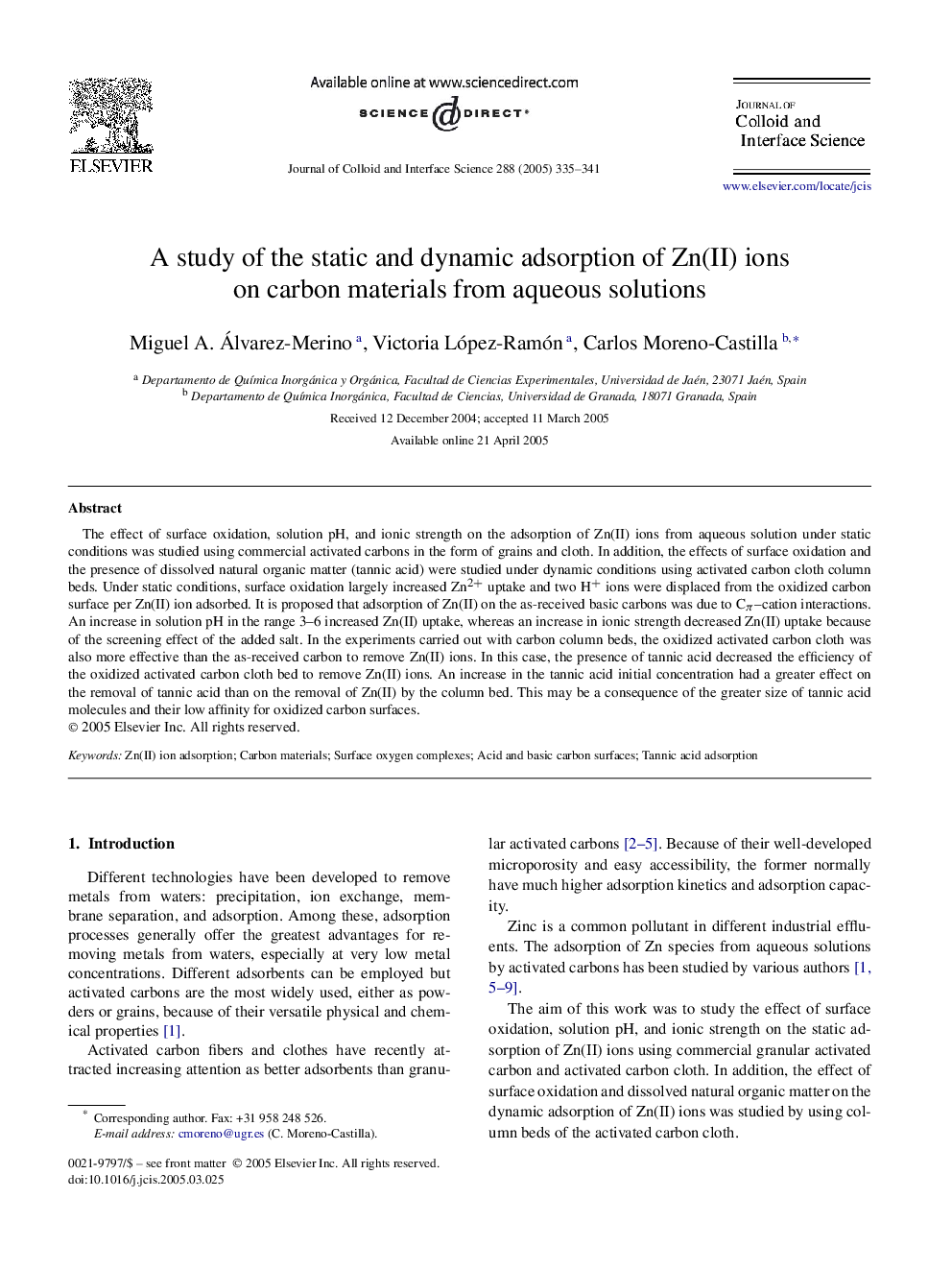| Article ID | Journal | Published Year | Pages | File Type |
|---|---|---|---|---|
| 10377626 | Journal of Colloid and Interface Science | 2005 | 7 Pages |
Abstract
The effect of surface oxidation, solution pH, and ionic strength on the adsorption of Zn(II) ions from aqueous solution under static conditions was studied using commercial activated carbons in the form of grains and cloth. In addition, the effects of surface oxidation and the presence of dissolved natural organic matter (tannic acid) were studied under dynamic conditions using activated carbon cloth column beds. Under static conditions, surface oxidation largely increased Zn2+ uptake and two H+ ions were displaced from the oxidized carbon surface per Zn(II) ion adsorbed. It is proposed that adsorption of Zn(II) on the as-received basic carbons was due to CÏ-cation interactions. An increase in solution pH in the range 3-6 increased Zn(II) uptake, whereas an increase in ionic strength decreased Zn(II) uptake because of the screening effect of the added salt. In the experiments carried out with carbon column beds, the oxidized activated carbon cloth was also more effective than the as-received carbon to remove Zn(II) ions. In this case, the presence of tannic acid decreased the efficiency of the oxidized activated carbon cloth bed to remove Zn(II) ions. An increase in the tannic acid initial concentration had a greater effect on the removal of tannic acid than on the removal of Zn(II) by the column bed. This may be a consequence of the greater size of tannic acid molecules and their low affinity for oxidized carbon surfaces.
Related Topics
Physical Sciences and Engineering
Chemical Engineering
Colloid and Surface Chemistry
Authors
Miguel A. Álvarez-Merino, Victoria López-Ramón, Carlos Moreno-Castilla,
